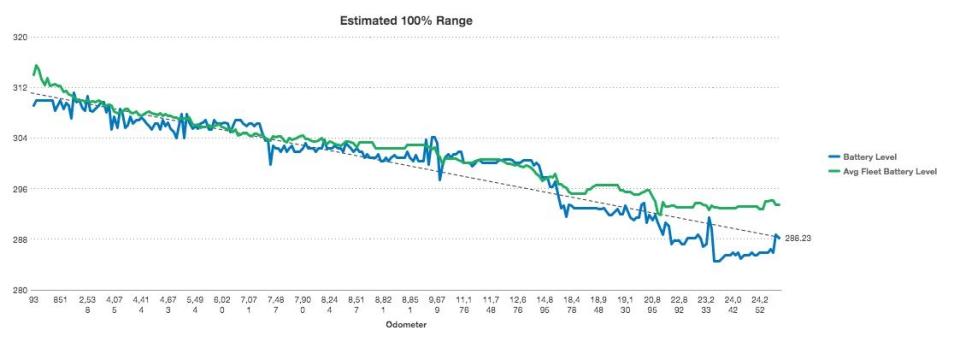Our Tesla Model 3 Has Lost 7% of Battery Capacity in 24,000 Miles
Battery packs in electric vehicles (EVs) slowly lose capacity to store energy over time.
The editors at Car & Driver have seen a 7 percent capacity loss over 24,000 miles on their Tesla Model 3.
All EVs have lengthy warranties on the battery pack to assuage buyers' potential fear of expensive replacement costs.
Much like the little lithium-ion pack in your cellphone, the battery in an electric vehicle (EV) slowly loses its ability to store energy over time. In the case of an electric car, this degradation in its total energy capacity means that its maximum range shrinks over time.
➡ You like badass EVs. So do we. Let's nerd out over them together.
There are several things that can cause this. Some are choices by the various automakers (such as how much of the battery's total capacity to make available; narrower swings in the state of charge are friendlier to longevity), and some based on the owner's behavior. For example, Car & Driver's long-term Tesla Model 3 specifies that charging above 90 percent shouldn't be done for daily use, only for trips, although it doesn't explicitly say what the long-term ramifications might be for regularly going above that threshold.
According to TeslaFi, a data tracking tool, the C & D Model 3's battery had 93 percent of its original 75.0-kWh capacity, which equated to a loss of about 22 miles of rated range from the original 310-mile EPA combined figure. This is based on the range data from the nearly 500 times the Model 3 has been charged to 90 percent of its capacity or above (see graph below).
In cases where the Model 3 battery was charged to less than 100 percent, which is the vast majority, TeslaFi does a linear extrapolation to arrive at the predicted range at 100 percent (e.g., if the battery is charged to 90 percent and the range figure is 270 miles, the extrapolated 100 percent range figure = 270 / 0.9 = 300). Compared to 158 other Model 3s at similar mileage that are also connected to TeslaFi, this specific Model 3 is faring worse than 123 of them and better than 35.
The Best Car Phone Holders
This discovery wasn't too surprising, considering that fast charging at Tesla's Superchargers isn't great for maximizing the battery's life. Supercharging also costs about twice as much per kilowatt-hour of energy than charging at home.

All of this means that the battery of this Model 3 is degrading at roughly 2.9 percent in pack capacity every 10,000 miles, which, if it continues at this rate, would put the vehicle at 65 percent capacity at 120,000 miles. That's under the 70-percent-capacity retention specified in Tesla's eight-year/120,000-mile battery warranty for the Model 3 Long Range.
However, Tesla makes it clear that in the case of a warranty claim, the car won't necessarily get a new battery, but one that at least meets the minimum 70 percent threshold.
🎥 Now Watch This:
You Might Also Like

 Yahoo Finance
Yahoo Finance 